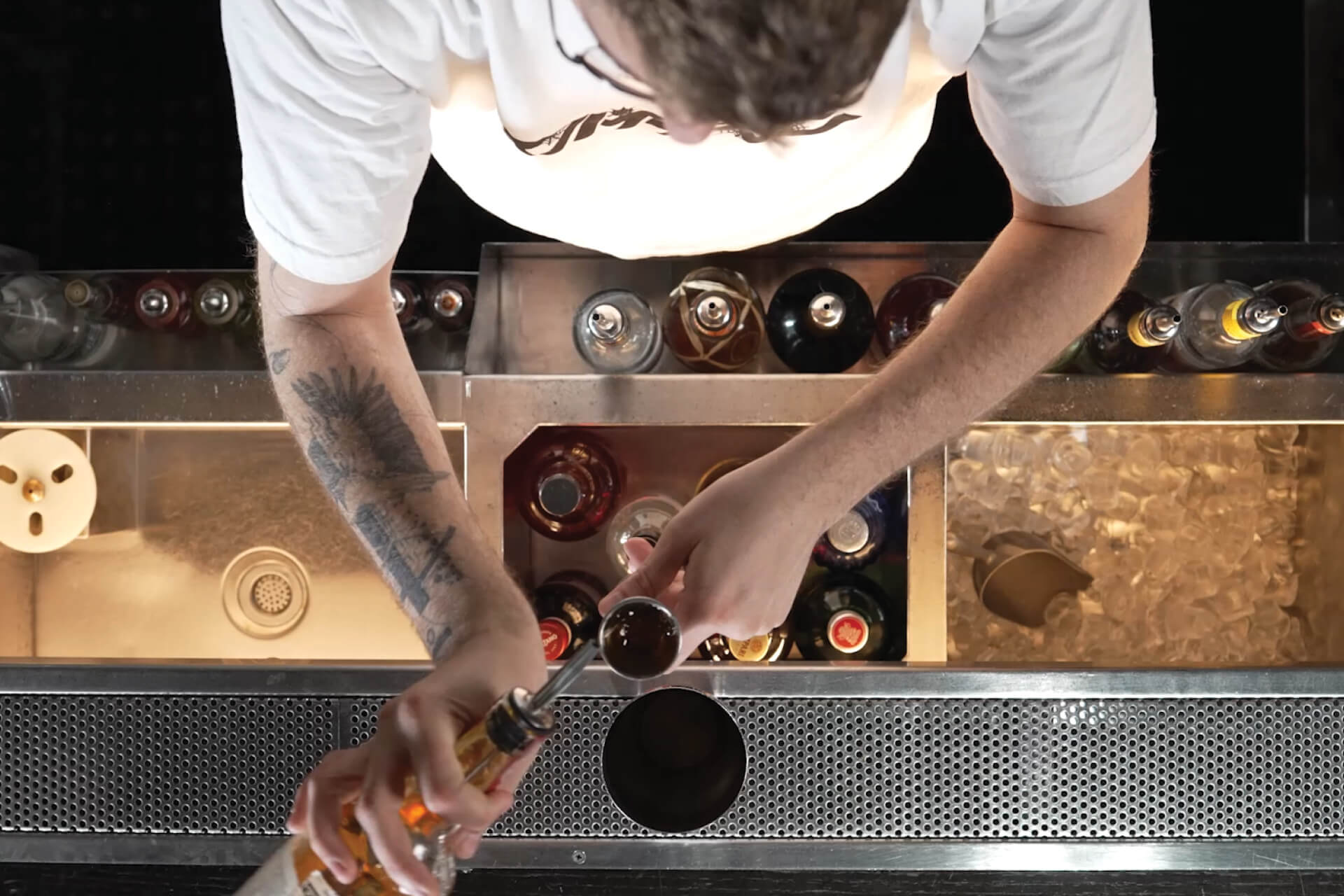
efficiency!!!! Many like to shout loudly, the more exclamation marks, the better!
What will you do in a Peak?!? For god sake how will you deal with three requests at the same time? What will happen when there is pressure and a lot of orders? Who will concentrate on service?
Stupid difficulties of this type, and similar ones, often come up as an argument against craft/flair. Bartenders who have never invested a minute in technical and aesthetic skills like to test the issue of “efficiency” against aesthetics, how convenient. After all, working “fast” is a matter of experience and knowing your surroundings. Quite a few bartenders get there one way or another.. so much fun to “acquire” skills that sound good, without having to train on them separately huh? An experienced bartender in a specific bar, who controls the locations, knows the customers, knows the pace, will learn as time goes by to work faster, as expected.
At the base of the “aesthetics comes at the expense of efficiency” approach
There are three mistakes:
First and foremost, who said you have to choose? Where exactly is the contradiction between beautiful and fast? Where is it written? There are so many actions that can be done in a beautiful and visually pleasing way, in a way that does not take even a thousandth of a second more. Holding the bottle for example, pouring cuts, jigger or spoon exercises between the basic operations, shaking, throwing, simultaneous stirring.
The foundation on which Craft bartending is built, describes a flow first and foremost. this is alone cancel the argument of “damage to efficiency”. After all, flow is efficiency. In my opinion, a bartender who controls their tools, hands, pace of work, correct technique, drills and the language of the bar – will prepare the ticket /order faster than a bartender who brags about his “speed of work” and who doesn’t even control pour cuts. Yes, that’s how ridiculous it is.
The second mistake is treating the shift as a single, fixed unit of time, or in other words: the shift is not a long peak that never ends, and treating it as such is fundamentally wrong. In my opinion, the evening can be divided into the beginning (happy hours), the middle (you can call it the “peak” in general) and the end (late night). An evening at a bar is divided into rounds, there are quite a few bars where you can book a place in advance, similar to restaurants, and there’s an awareness of rush hours, meaning that the place controls the pace of seating in advance and knows when to increase the workforce, and when to slow down.
This is without saying a word about the difference between shifts, because Thursday evening can be twice as busy as a Monday evening. A bartender who considers himself a high-level professional must know how to function maximally in front of a bar full of people while working at a high pace, and also in front of the first couple of customers (or the last for that matter) at the bar, when there is no rush at all. When the evening is slow, and the bartender is not required to put out a maximum of drinks in a minimum of time, does the word “efficiency” remain the same meaning? If efficiency is “make 10 drinks in 5 minutes”, what does it mean when you only have 2 drinks to make? Because in my opinion – in a situation like this, where there are 2 drinks to make, and they are poured in front of the two sitting at the bar, efficiency becomes something completely different… In the above case – opening shakers nicely, or using a spoon before mixing, will be more effective than finishing preparing the drinks in record time.
The third mistake is ignoring the existing solutions for fast work during rush hours, for example: batches. For those who don’t know, it means pre-mixing the cocktails in a dedicated bottle, before the shift, and pouring them into a shaker when they are actually already ready as a cocktail, and all that remains to be done is to add juices and ice. Don’t get confused – the best cocktail bars in the world work with pre-prepared batches in countless situations, and every bartender who has ever done a guest shift knows very well how much a batch saves time, without harming the final product. In reality, a batch is a decision, and it is an excellent tool that “frees up time” during rush hours and helps to prioritize other elements, such as aesthetics if you wish.
Take the fastest bartender in the world and let him make 3 Negronis, put in front of him a bartender with no arms with a batch of Negroni under him, and I guarantee you that the whole “efficiency comes at the expense of aesthetics” concept will collapse in on itself like there were video tapes in the digital age, this is the truth. Batching is one specific example of optimization during stressful hours at work, along with many more.
In conclusion:
You can work fast, you can work slow, you can work nice, you can work ugly. You can combine the options – fast and beautiful, fast and ugly, slow and beautiful, slow and ugly. It is possible, and sometimes even desirable, to use solutions that have already been thought of before, such as working with batches, or assisting bartenders, or pouring cocktails from the tap (which in a way is also a type of batch). 

Work fast and beautifully without batches, work slowly and beautifully with batches, do whatever you want … Just don’t create an imaginary balance between efficiency and aesthetics, there is no symmetry here. A bar is not a race, and good hospitality is not always characterized by speed.